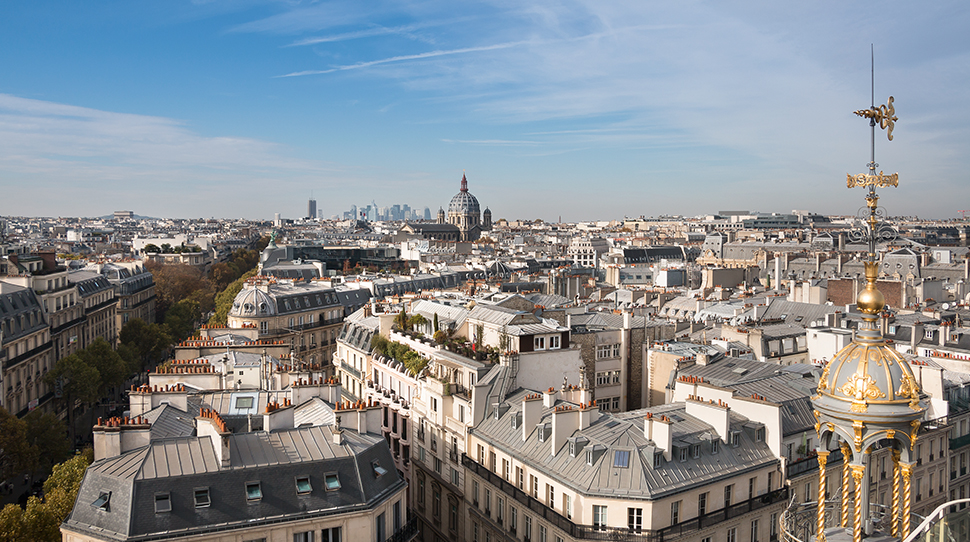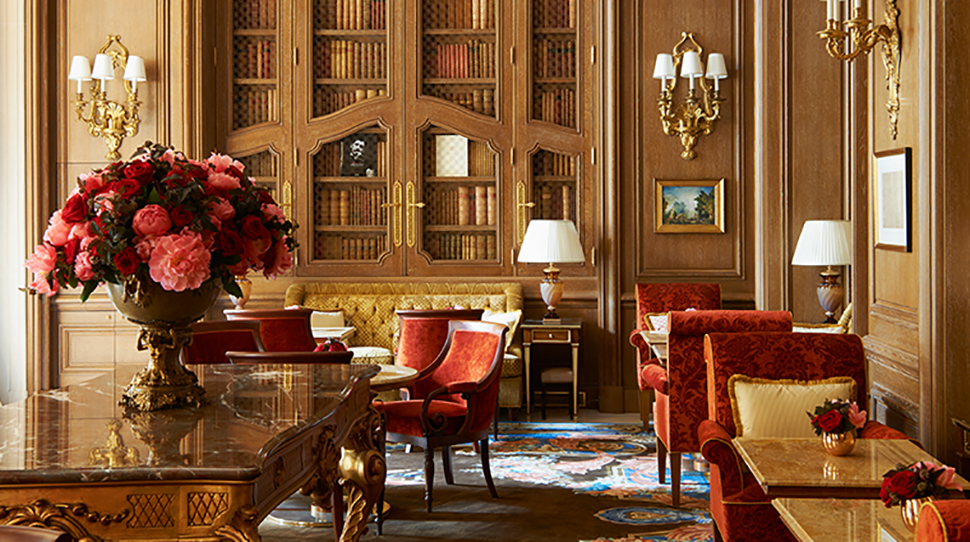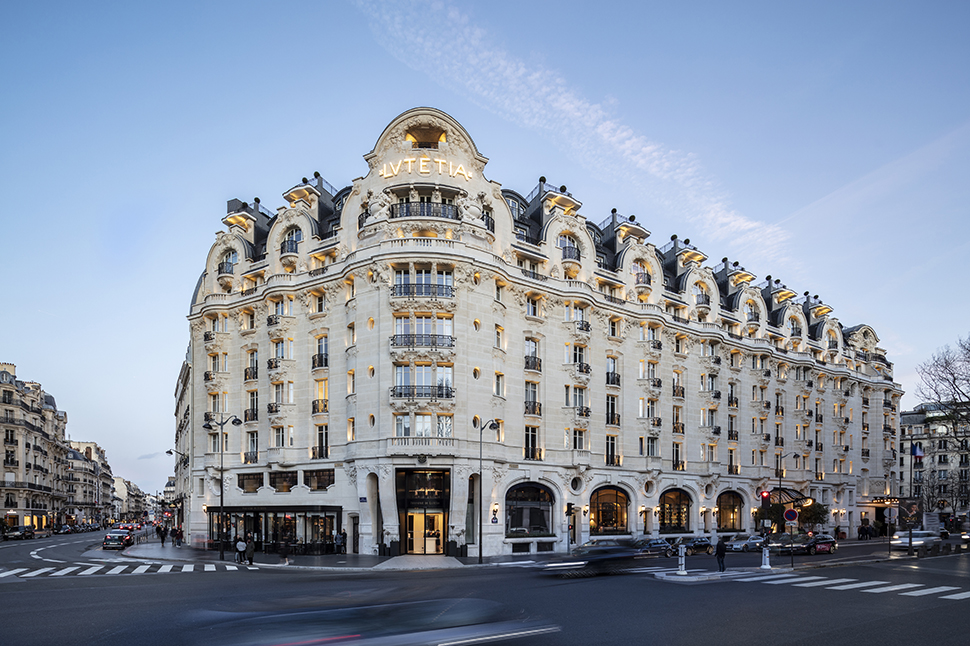
For many travelers, the sights of Paris form a well-worn path: Eiffel Tower, Champs-Élysées, Louvre, repeat. Separating yourself from the throngs of visitors at these highly touristic sites can lead to a more rewarding (and authentic) Parisian experience.
We’ve replaced the usual suspects with lesser-known options to create a unique guide guaranteed to fill you with joie de vivre.

Instead of having tea at Ladurée
Try the afternoon service at Forbes Travel Guide Five-Star Ritz Paris.
Sure, the famed luxury bakery Ladurée is ever-present in Paris, with its colorful macarons dotting airports, street corners and Printemps department store, but its popularity also means an abundance of lines, selfie sticks and dog-eared travel guides.
With its crackling fireplace, marble tabletops and tiered stands of buttery madeleines favored by the salon’s namesake, Thé a la Française (French-style tea) in Salon Proust at the Ritz gives the British a run for their money when it comes to elegance and sophistication.
Between 2:30 and 6 p.m., head pastry chef François Perret dazzles with an extravagantly sweet display of meringues, petit fours, marble cakes and tarts. After 6 p.m., the salon becomes a champagne bar, where you can extend your experience with a bubbly conclusion.
Instead of checking out the Catacombs
Visit Musée de la Libération de Paris.
While the grisly Catacombs are wildly popular, plunging visitors 65 feet underground to take in a mile-long circuit of former residents in all their bony glory, these days we prefer the recently opened Musée de la Libération de Paris, which similarly leads you into a subterranean bunker that served as the command post for the French resistance during World War II.
Your tour starts above ground, taking in the fall of Paris to the Nazis and the efforts of French citizens to subvert German control. One hundred steps lead down to the bunker, where you can don HoloLens virtual reality goggles to fully re-create the frantic final days of the war, when the bunker became the command post for Colonel Henri Rol-Tanguy before the city was liberated on August 25, 1944. Entrance to the museum is free, though we highly suggest booking visits to the bunker in advance online.
Instead of taking a boat trip on the Seine
Take a ride down Canal St. Martin in the heart of the city.
Many a song, book and film have waxed poetic about la Seine, which cuts Paris in half and features an array of daily boat tours, dinner cruises and party barges.
Yet skipping the over-trafficked river for the more urban Canal St. Martin promises a more authentic bobo (bourgeois bohemian) experience. Cruise down the three-mile waterway while knowledgeable guides detail the history of the nearly 200-year-old canal system.
The leisurely ride lets you take in the more diverse 10th arrondissement, whose inhabitants line the shore in all seasons to relax and socialize. The same goes for the boats, which offer the chance to enjoy champagne, wine and beer on board.
Instead of visiting the sadly off-limits Notre Dame
Stop by the Basilica of Saint-Denis.
Possibly the only positive to come out of the devastating 2019 fire at Notre Dame Cathedral is the chance for this often-overlooked basilica in the northern suburb of Saint-Denis to get some much overdue attention.
Architecturally, the ancient church is one of the first built in the Gothic style — those longing for the dramatic rose windows of Notre Dame will be sated by the basilica’s two similarly styled stained-glass beauties.
The church is most well known as the resting place of almost every French monarch from the 10th to 18th centuries, including Louis XVI and Marie Antoinette. Many are uniquely displayed in recumbent effigies, while others reside in the large Bourbon crypt. Another patron saint of France, Joan of Arc, laid down her weapons here in 1429 prior to the siege of Paris.

Instead of staying on the Right Bank
Switch it up and try la Rive Gauche (the Left Bank).
The more bohemian side of the city, the Left Bank of the Seine was home to artists and writers ranging from Ernest Hemingway and Anais Nin to Gertrude Stein and F. Scott Fitzgerald. Most of the city’s best hotels cling to the Right Bank (Rive Droite), adjacent to beloved landmarks such as the Champs-Élysées and the Louvre.
By comparison, la Rive Gauche can feel liberating — free of tourist hordes and Eiffel Tower keychain hawkers. This side of the river gives you the freedom to roam like a local.
Our favorite property to bring luxury to the Left Bank is Hotel Lutetia, which reopened in 2018 after a four-year, $234 million renovation. The stunning art nouveau property has a storied history: built by the owners of the adjacent Le Bon Marché department store, it was occupied by the German Abwehr (military intelligence service) during World War II. Book The Eiffel Writer’s Suite for excellent views and artistic inspiration.
Instead of browsing Centre Pompidou
Look for modern art at Palais de Tokyo.
While the Centre Pompidou with its distinctive inside-out architecture and colorful pipe system is one of the city’s most distinctive museums, Palais de Tokyo is one of the most overlooked.
Dedicated to both emerging and established contemporary artists, the Palais considers itself an “anti-museum” forever in transformation, with exhibits, residencies and performances of all kinds — those who don’t think the Pompidou goes far enough will delight in this gallery’s avant-garde offerings.
The building also houses three restaurants, a quirky bookstore/concept shop and Yoyo nightclub. Most recently, Palais de Tokyo made the news when Jeff Koons’ Bouquet of Tulips had to be relocated from the museum’s plaza to the nearby gardens of Petit-Palais because the concrete could no longer support the 34-ton sculpture.
